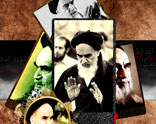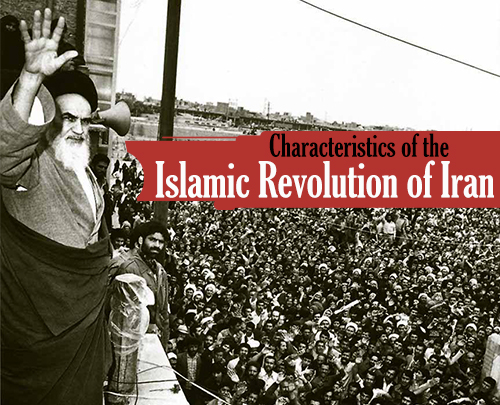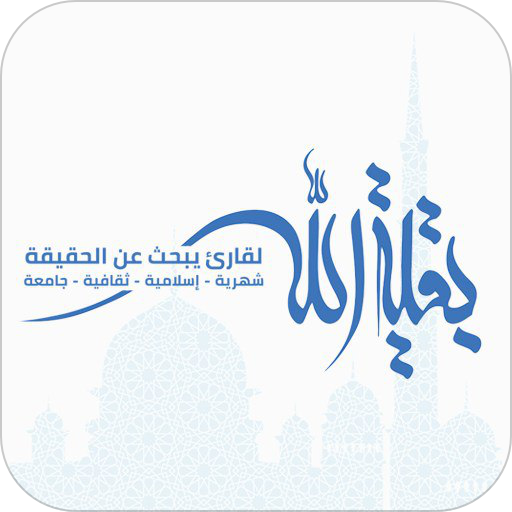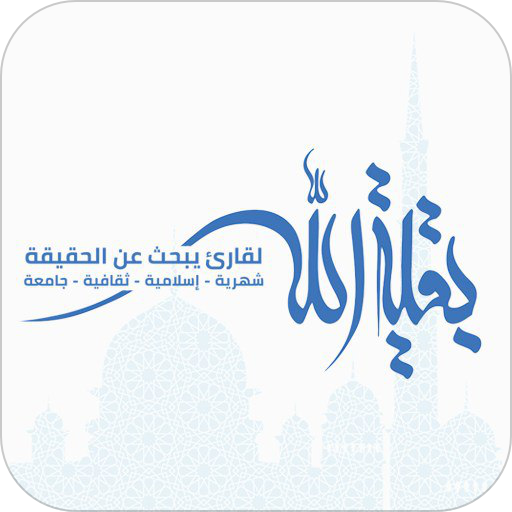The emphases of the Imam’s activity began to change with the death of Burujirdi
on March 31, 1961, for he now emerged as one of the successors to Burujirdi’s
position of leadership. This emergence was signaled by the publication of some
of his writings on fiqh, most importantly the basic handbook of religious
practice entitled, like others of its genre, Tauzih al- Masa’il. He was soon
accepted as marja’-i taqlid by a large number of Iranian Shi’is. His leadership
role was, however, destined to go far beyond that traditional for a marja’-i
taqlid and to attain a comprehensiveness unique in the history of the Shi’i
ulama.
This became apparent soon after the death of Burujirdi when Muhammad Riza Shah,
secure in his possession of power after the CIA-organized coup of August 1953,
embarked on a series of measures designed to eliminate all sources of
opposition, actual or potential, and to incorporate Iran firmly into American
patterns of strategic and economic domination. In the autumn of 1962, the
government promulgated new laws governing elections to local and provincial
councils, which deleted the former requirement that those elected be sworn into
office on the Qur’an. Seeing in this a plan to permit the infiltration of public
life by the Baha’is, Imam Khumayni telegraphed both the Shah and the prime
minister of the day, warning them to desist from violating both the law of Islam
and the Iranian Constitution of 1907, failing which the ulama would engage in a
sustained campaign of protest. Rejecting all compromise measures, the Imam was
able to force the repeal of the laws in question seven weeks after they had been
promulgated. This achievement marked his emergence on the scene as the principal
voice of opposition to the Shah.
A more serious confrontation was not long in coming. In January 1963, the Shah
announced a six-point program of reform that he termed the White Revolution, an
American-inspired package of measures designed to give his regime a liberal and
progressive facade. Imam Khumayni summoned a meeting of his colleagues in Qum to
press upon them the necessity of opposing the Shah’s plans, but they were
initially hesitant. They sent one of their number, Ayatullah Kamalvand, to see
the Shah and gauge his intentions.
Although the Shah showed no inclination to retreat or compromise, it took
further pressure by Imam Khumayni on the other senior ulama of Qum to persuade
them to decree a boycott of the referendum that the Shah had planned to obtain
the appearance of popular approval for his White Revolution. For his own part,
Imam Khumayni issued on January 22, 1963 a strongly worded declaration
denouncing the Shah and his plans. In imitation, perhaps, of his father, who had
taken an armored column to Qum in 1928 in order to intimidate certain outspoken
ulama, the Shah came to Qum two days later. Faced with a boycott by all the
dignitaries of the city, he delivered a speech harshly attacking the ulama as a
class.
On January 26, the referendum was held, with a low turnout that reflected the
growing heed paid by the Iranian people to Imam Khumayni’s directives. He
continued his denunciation of the Shah’s programs, issuing a manifesto that also
bore the signatures of eight other senior scholars. In it he listed the various
ways in which the Shah had violated the constituent, condemned the spread of
moral corruption in the country, and accused the Shah of comprehensive
submission to America and Israel: “I see the solution to lie in this tyrannical
government being removed, for the crime of violating the ordinances of Islam and
trampling the constitution, and in a government taking its place that adheres to
Islam and has concern for the Iranian nation.”1 He also decreed that
the Nauruz celebrations for the Iranian year 1342 (which fell on March 21, 1963)
be cancelled as a sign of protest against government policies.
The very next day, paratroopers were sent to the Fayziya madrasa in Qum, the
site where the Imam delivered his public speeches. They killed a number of
students, beat and arrested a number of others, and ransacked the building.
Unintimidated, the Imam continued his attacks on the regime. On April 1, he
denounced the persistent silence of certain apolitical ulama as “tantamount to
collaboration with the tyrannical regime,” and one day later proclaimed
political neutrality under the guise of taqiya to be haram.2 When the
Shah sent his emissaries to the houses of the ulama in Qum to threaten them with
the destruction of their homes, the Imam reacted contemptuously by referring to
the Shah as “that little man (mardak).” Then, on April 3, 1963, the fortieth day
after the attack on the Fayziya madrasa, he described the Iranian government as
being determined to eradicate Islam at the behest of America, Israel, and
himself as resolved to combat it.
Confrontation turned to insurrection some two months later. The beginning of
Muharram, always a time of heightened religious awareness and sensitivity, saw
demonstrators in Tehran carrying pictures of the Imam and denouncing the Shah in
front of his own palace. On the afternoon of ‘Ashura (June 3, 1963), Imam
Khumayni delivered a speech at the Fayziya madrasa in which he drew parallels
between the Umayyad caliph Yazid and the Shah and warned the Shah that if he did
not change his ways the day would come when the people would offer up thanks for
his departure from the country.3 This warning was remarkably
prescient, for on January 16, 1979, the Shah was indeed obliged to leave Iran
amidst scenes of popular rejoicing. The immediate effect of the Imam’s speech
was, however, his arrest two days later at 3 o’clock in the morning by a group
of commandos who hastily transferred him to the Qasr prison in Tehran.
As dawn broke on June 3, the news of his arrest spread first through Qum and
then to other cities. In Qum, Tehran, Shiraz, Mashhad and Varamin, masses of
angry demonstrators were confronted by tanks and ruthlessly slaughtered. It was
not until six days later that order was fully restored. This uprising of 15
Khurdad 1342 (the day in the Iranian calendar on which it began) marked a
turning point in Iranian history. Henceforth the repressive and dictatorial
nature of the Shah’s regime, reinforced by the unwavering support of the United
States, was constantly intensified, and with it the prestige of Imam Khumayni as
the only figure of note - whether religious or secular - willing to challenge
him. The arrogance imbuing the Shah’s policies also caused a growing number of
the ulama to abandon their quietism and align themselves with the radical goals
set forth by the Imam. The movement of 15 Khurdad may therefore be characterized
as the prelude to the Islamic Revolution of 1978-79; the goals of that
revolution and its leadership had already been determined.
After nineteen days in the Qasr prison, Imam Khumayni was moved first, to the
‘Ishratabad military base and then to a house in the Davudiya section of Tehran
where he was kept under surveillance. Despite the killings that had taken place
during the uprising, mass demonstrations were held in Tehran and elsewhere
demanding his release and some of his colleagues came to the capital from Qum to
lend their support to the demand. It was not, however, until April 7, 1964 that
he was released, no doubt on the assumption that imprisonment had tempered his
views and that the movement he had led would quietly subside. Three days after
his release and return to Qum, he dispelled such illusions by refuting
officially inspired rumors that he had come to an understanding with the Shah’s
regime and by declaring that the movement inaugurated on 15 Khurdad would
continue. Aware of the persisting differences in approach between the Imam and
some of the other senior religious scholars, the regime had also attempted to
discredit him by creating dissension in Qum. These attempts, too, were
unsuccessful, for early in June 1964 all the major ulama put their signatures to
declarations commemorating the first anniversary of the uprising of 15 Khurdad.
Despite its failure to sideline or silence Imam Khumayni, the Shah’s regime
continued its pro-American policies unwaveringly. In the autumn of 1964, it
concluded a status of forces agreement with the United States that provided
immunity from prosecution for all American personnel in Iran and their
dependents. This occasioned the Imam to deliver what was perhaps the most
vehement speech of the entire struggle against the Shah; certainly one of his
close associates, Ayatullah Muhammad Mufattih, had never seen him so agitated.4
He denounced the agreement as a surrender of Iranian independence and
sovereignty, made in exchange for a $200 million loan that would be of benefit
only to the Shah and his associates, and described as traitors all those in the
Majlis who voted in favor of it; the government lacked all legitimacy, he
concluded.5
Shortly before dawn on November 4, 1964, again a detachment of commandos
surrounded the Imam’s house in Qum, arrested him, and this time took him
directly to Mehrabad airport in Tehran for immediate banishment to Turkey. The
decision to deport rather than arrest Imam Khumayni and imprison him in Iran was
based no doubt on the hope that in exile he would fade from popular memory.
Physical elimination would have been fraught with the danger of an
uncontrollable popular uprising. As for the choice of Turkey, this reflected the
security cooperation existing between the Shah’s regime and Turkey.
The Imam was first lodged in room 514 of Bulvar Palas Oteli in Ankara, a
moderately comfortable hotel in the Turkish capital, under the joint
surveillance of Iranian and Turkish security officials. On November 12, he was
moved from Ankara to Bursa, where he was to reside another eleven months. The
stay in Turkey cannot have been congenial, for Turkish law forbade Imam Khumayni
to wear the cloak and turban of the Muslim scholar, an identity which was
integral to his being; the sole photographs in existence to show him bareheaded
all belong to the period of exile in Turkey.6 However, on December 3,
1964, he was joined in Bursa by his eldest son, Hajj Mustafa Khumayni; he was
also permitted to receive occasional visitors from Iran, and was supplied with a
number of books on fiqh. He made use of his forced stay in Bursa to compile
Tahrir al- Wasila, a two-volume compendium on questions of jurisprudence.
Important and distinctive are the fatwas this volume contains, grouped under the
headings of al-amr bi ‘l-ma’ruf wa ‘l-nahy ‘an al-munkar and difa’. The Imam
decrees, for example, that “if it is feared that the political and economic
domination (by foreigners) over an Islamic land will lead to the enslavement and
weakening of the Muslims, then such domination must be repelled by appropriate
means, including passive resistance, the boycott of foreign goods, and the
abandonment of all dealings and association with the foreigners in question.”
Similarly, “if an attack by foreigners on one of the Islamic states is
anticipated, it is incumbent on all Islamic states to repel the attack by all
possible means; indeed, this is incumbent on the Muslims as a whole.”7
On September 5, 1965, Imam Khumayni left Turkey for Najaf in Iraq, where he was
destined to spend thirteen years. As a traditional center of Shi’i learning and
pilgrimage, Najaf was clearly a preferable and more congenial place of exile. It
had moreover already functioned as a stronghold of ulama opposition to the
Iranian monarchy during the Constitutional Revolution of 1906-1909. But it was
not in order to accommodate the Imam that the Shah arranged for his transfer to
Najaf. First, there was continuing disquiet among the Imam’s followers at his
forced residence in Bursa, away from the traditional milieu of the Shi’i madrasa;
such objections could be met by moving him to Najaf. Second, it was hoped that
once in Najaf, the Imam would either be overshadowed by the prestigious ulama
there, men such as Ayatullah Abu ‘l-Qasim Khu’i (d. 1995), or that he would
challenge their distaste for political activism and squander his energies on
confronting them. He skirted this dual danger by proffering them his respect
while continuing to pursue the goals he had set himself before leaving Iran.
Another pitfall he avoided was association with the Iraqi government, which
occasionally had its own differences with the Shah’s regime and was of a mind to
use the Imam’s presence in Najaf for its own purposes. The Imam declined the
opportunity to be interviewed on Iraqi television soon after his arrival, and
resolutely kept his distance from succeeding Iraqi administrations.
Once settled in Najaf, Imam Khumayni began teaching fiqh at the Shaykh Murtaza
Ansari madrasa. His lectures were well attended, by students not only from Iran
but also from Iraq, India, Pakistan, Afghanistan, and the Persian Gulf states.
In fact, a mass migration to Najaf from Qum and other centers of religious
learning in Iran was proposed to the Imam, but he advised against it as a
measure bound to depopulate Qum and weaken it as a center of religious guidance.
It was also at the Shaykh Murtaza Ansari madrasa that he delivered, between
January 21 and February 8, 1970, his celebrated lectures on vilayat-i faqih, the
theory of governance that was to be implemented after the triumph of the Islamic
Revolution. (The text of these lectures was published in Najaf, not long after
their delivery, under the title Vilayat-i Faqih ya Hukumat-i Islami; a slightly
abbreviated Arabic translation soon followed). This theory, which may be
summarized as the assumption by suitably qualified ulama of the political and
juridical functions of the Twelfth Imam during his occultation, had already been
put forward, somewhat tentatively, in his first published work, Kashf al-Asrar.
Now he presented it as the self-evident and incontestable consequence of the
Shi’i doctrine of the Imamate, citing and analyzing in support of it all
relevant texts from the Qur’an and the traditions of the Prophet (S)8
and the Twelve Imams (A)9 He emphasized also the harm that had come
to Iran (as well as other Muslim countries) from abandoning Islamic law and
government and relinquishing the political realm to the enemies of Islam.
Finally, he delineated a program for the establishment of an Islamic government,
laying particular stress on the responsibilities of the ulama to transcend their
petty concerns and to address the people fearlessly: “It is the duty of all of
us to overthrow the taghut, the illegitimate political powers that now rule the
entire Islamic world.”10
The text of the lectures on vilayat-i faqih was smuggled back to Iran by
visitors who came to see the Imam in Najaf, as well as by ordinary Iranians who
came on pilgrimage to the shrine of Hazrat ‘Ali (A) The same channels were used
to convey to Iran the numerous letters and proclamations in which the Imam
commented on the events that took place in his homeland during the long years of
exile. The first such document, a letter to the Iranian ulama assuring them of
the ultimate downfall of the Shah’s regime, is dated April 16, 1967. On the same
day he also wrote to prime minister Amir ‘Abbas Huvayda accusing him of running
“a regime of terror and thievery.”11 On the occasion of the Six Day
War in June 1967, the Imam issued a declaration forbidding any type of dealing
with Israel as well as the consumption of Israeli goods. This declaration was
widely and openly publicized in Iran, which led to the ransacking of Imam
Khumayni’s house in Qum and the arrest of Hajj Sayyid Ahmad Khumayni, his second
son, who had been living there. (Some of the unpublished works of the Imam were
lost or destroyed on this occasion). It was also at this time that the Shah’s
regime contemplated moving the Imam from Iraq to India; a location from which
communications with Iran would have been far more difficult, but the plan was
thwarted. Other developments on which the Imam commented from Najaf were the
extravagant celebrations of 2500 years of Iranian monarchy in October 1971 (“it
is the duty of the Iranian people to refrain from participation in this
illegitimate festival”); the formal establishment of a one-party system in Iran
in February 1975 (the Imam prohibited membership in the party, the Hizb-i
Rastakhiz, in a fatwa issued the following month); and the substitution, in the
same month, of the imperial (shahanshahi) calendar for the solar Hijri calendar
that had been official in Iran until that time. Some developments were met with
fatwas rather than proclamations: for example, the Imam rejected as incompatible
with Islam the Family Protection Law of 1967 and classified as adulteresses
women who remarried after obtaining a divorce under its provisions.12
Imam Khumayni had also to deal with changing circumstances in Iraq. The Ba’th
Party, fundamentally hostile to religion, had come to power in July 1967 and
soon began exerting pressure on the scholars of Najaf, both Iraqi and Iranian.
In 1971, as Iraq and Iran entered a state of sporadic and undeclared war with
each other, the Iraqi regime began expelling from its territory Iranians whose
forebears had in some cases been residing there for generations. The Imam, who
until that point had scrupulously kept his distance from Iraqi officialdom, now
addressed himself directly to the Iraqi leadership condemning its actions.
Imam Khumayni was, in fact, constantly, and acutely aware of the connections
between Iranian affairs and those of the Muslim world in general and the Arab
lands in particular. This awareness led him to issue from Najaf a proclamation
to the Muslims of the world on the occasion of the hajj in 1971, and to comment,
with special frequency and emphasis, on the problems posed by Israel for the
Muslim world. The Imam’s strong concern for the Palestine question led him to
issue a fatwa on August 27, 1968 authorizing the use of religious monies (vujuh-i
shar’i) to support the nascent activities of al-Asifa, the armed wing of the
Palestine Liberation Organization; this was confirmed by a similar and more
detailed ruling issued after a meeting with the Baghdad representative of the
PLO.13
The distribution in Iran, on however limited a scale, of the proclamations and
fatwas of Imam Khumayni was in itself enough to ensure that his name not be
forgotten during the years of exile. Equally important, the movement of Islamic
opposition to the Shah’s regime that had been inaugurated by the uprising of 15
Khurdad continued to develop despite the brutality unhesitatingly dispensed by
the Shah. Numerous groups and individuals explicitly owed their allegiance to
the Imam. Soon after his exiling there came into being an organization called
Hay’atha-yi Mu’talifa-yi Islami (the Allied Islamic Associations), headquartered
in Tehran but with branches throughout Iran. Active in it were many who had been
students of the Imam in Qum and who came to assume important responsibilities
after the revolution, men such as Hashimi-Rafsanjani and Javad Bahunar. In
January 1965, four members of the organization assassinated Hasan ‘Ali Mansur,
the prime minister who had been responsible for the exiling of the Imam.
There were no individuals designated, even clandestinely, as Imam Khumayni’s
authorized representatives in Iran while he was in exile.
However, senior ulama such as Ayatullah Murtaza Mutahhari, Ayatullah Sayyid
Muhammad Husayn Bihishti (d. 1981), and Ayatullah Husayn ‘Ali Muntaziri, were in
contact with him, directly and indirectly, and were known to speak on his behalf
in important matters. Like their younger counterparts in the Hay’atha-yi
Mu’talafa-yi Islami, all three went on to perform important functions during and
after the revolution.
The continued growth of the Islamic movement during Imam Khumayni’s exile should
not be attributed exclusively to his abiding influence or to the activity of
ulama associated with him. Important, too, were the lectures and books of ‘Ali
Shari’ati (d. 1977), a university-educated intellectual whose understanding and
presentation of Islam were influenced by Western ideologies, including Marxism,
to a degree that many ulama regarded as dangerously syncretistic. When the Imam
was asked to comment on the theories of Shari’ati, both by those who supported
them and by those who opposed them, he discreetly refrained from doing so, in
order not to create a division within the Islamic movement that would have
benefited the Shah’s regime.
The most visible sign of the persisting popularity of Imam Khumayni in the
pre-revolutionary years, above all at the heart of the religious institution in
Qum, came in June 1975 on the anniversary of the uprising of 15 Khurdad.
Students at the Fayziya madrasa began holding a demonstration within the
confines of the building, and a sympathetic crowd assembled outside. Both
gatherings continued for three days until they were attacked on the ground by
commandos and from the air by a military helicopter, with numerous deaths
resulting. The Imam reacted with a message in which he declared the events in
Qum and similar disturbances elsewhere to be a sign of hope that “freedom and
liberation from the bonds of imperialism” were at hand.14 The
beginning of the revolution came indeed some two and a half years later.
* Imam Khomeini: A Short Biography. By: Hamid Algar. Published
by: The Institute for Compilation and Publication of Imam Khomeini's Works
(International Affairs Department)
1- Sahifa-yi Nur, I, p. 27.
2- Kauthar, I, p. 67; Sahifa-yi Nur, I, p. 39.
3- Sahifa-yi Nur, I, p. 46.
4- Interview with the present writer, Tehran, December 1979.
5- Kauthar, I, pp. 169-178.
6- See Ansari, Hadis-I Bidari, p. 67.
7- Tahrir al-Wasila, I, p. 486.
8- For maintaining readability, (S) which is an acronym for “Salla (a)llahu
alayhi wa aalihi wa sallam”is used throughout
the book to denote “May peace and benedictions of God be upon him and his
family.” It is used for Prophet Muhammad.
9- For maintaining readability, (A) which is an acronym for “Alayhi (alayhim)
al-salaam”is used throughout the book to
denote “May peace of God be upon him/her/them.” It is used for the Prophets,
Imams, and saints.
10- Vilayat-i Faqih, Najaf, n.d., p. 204.
11- Sahifa-yi Nur, I, pp. 129, 132.
12- Imam Khomeini, Risala-yi Ahkam, p. 328.
13- Sahifa-yi Nur, I, pp. 144-5.
14- Sahifa-yi Nur, I, p. 215.


















